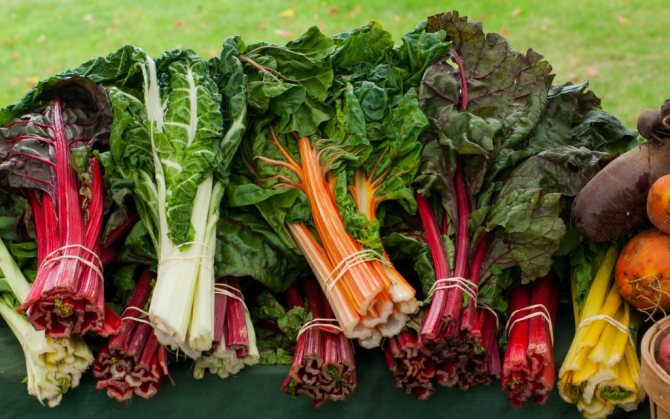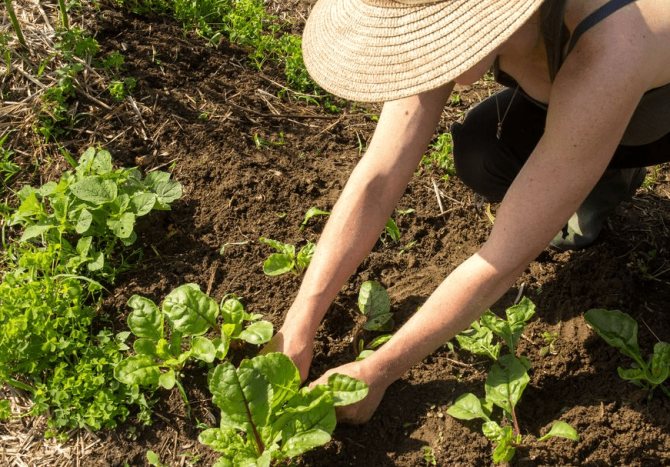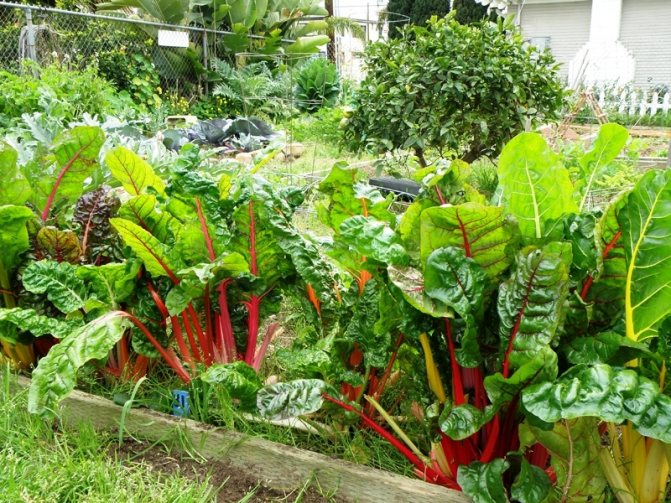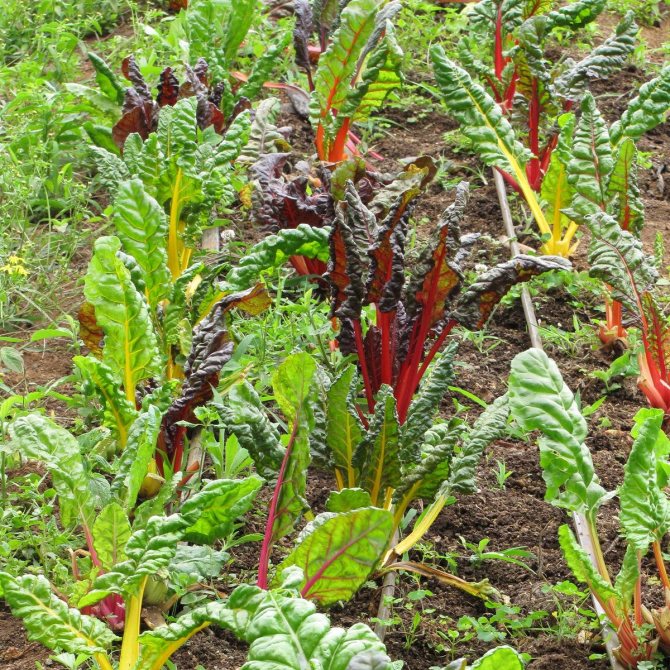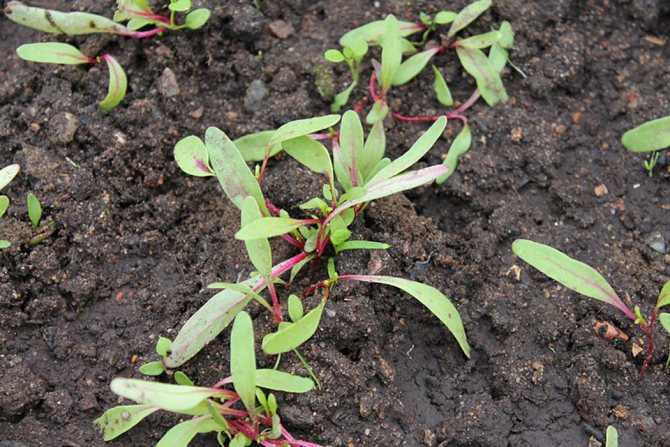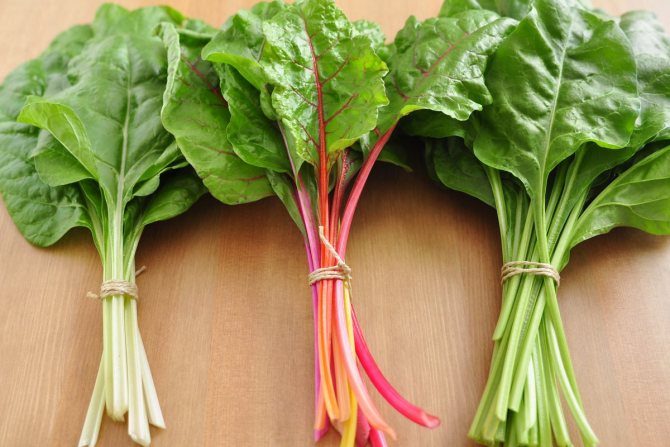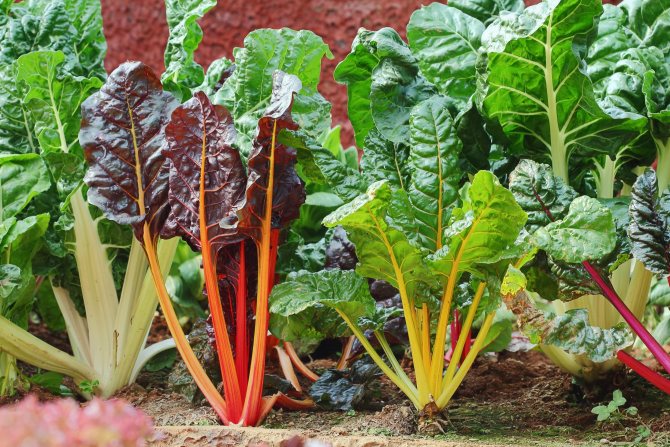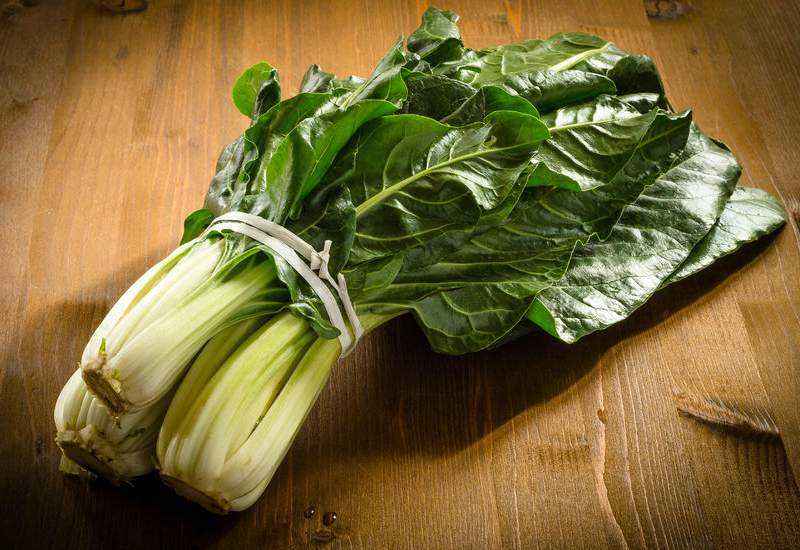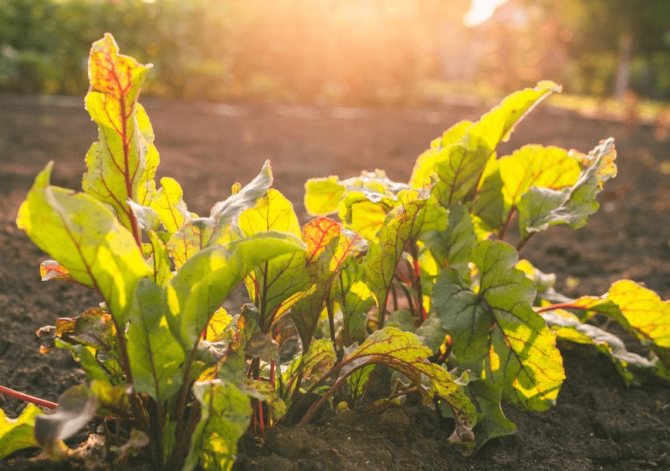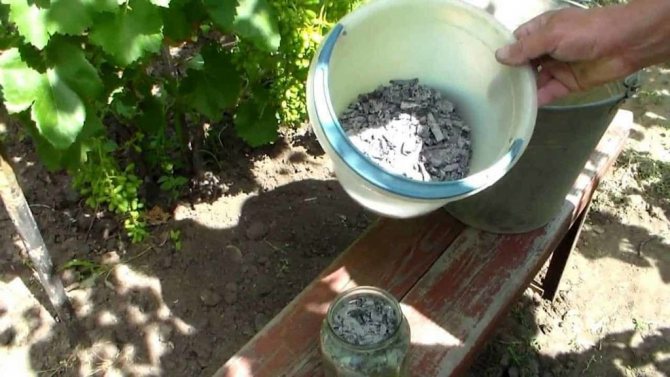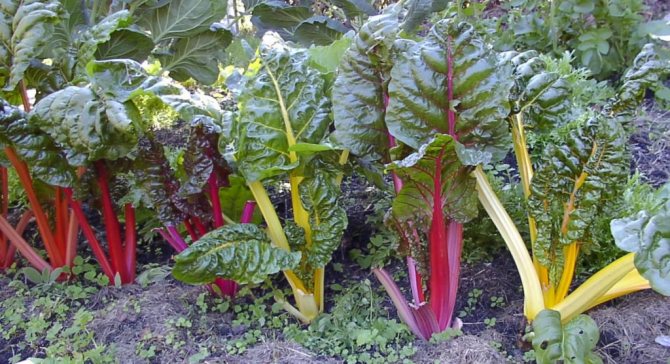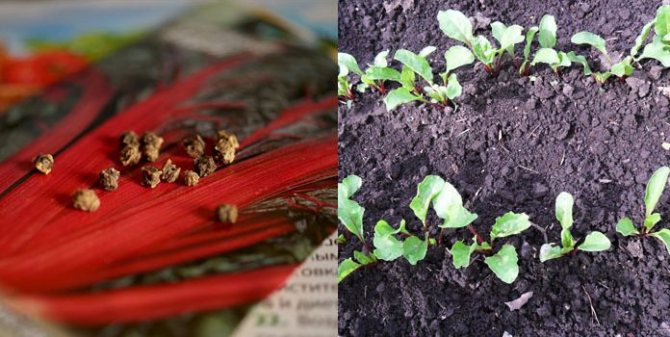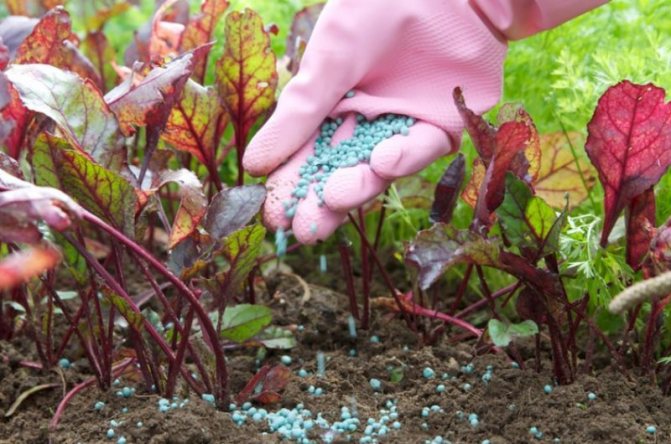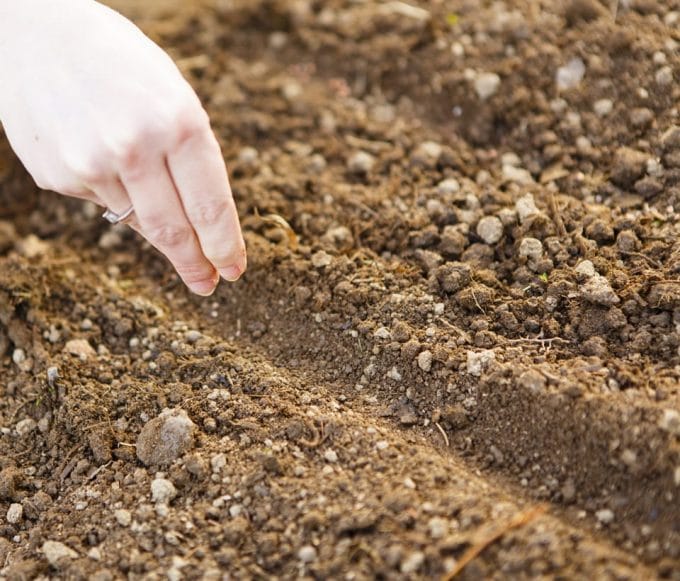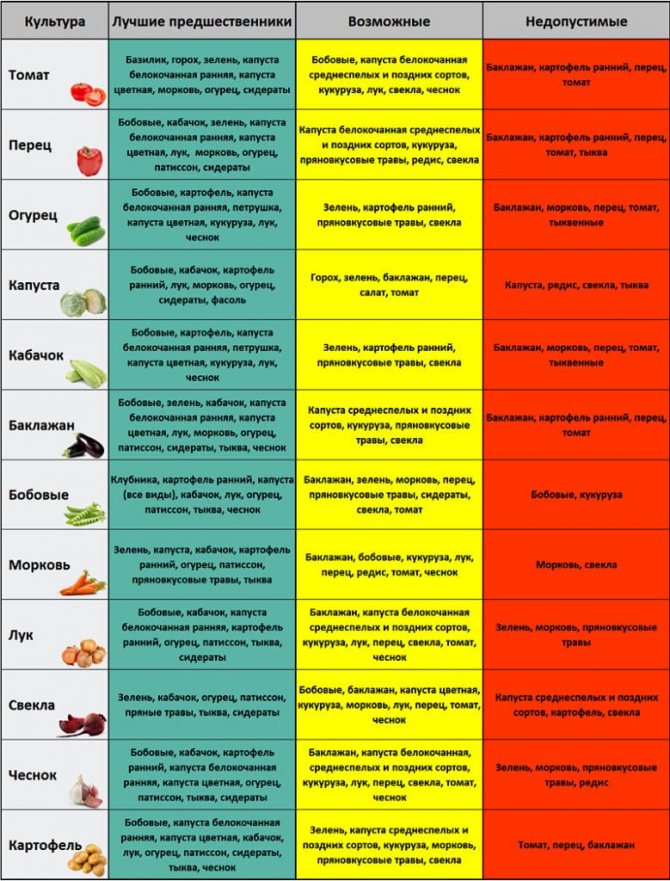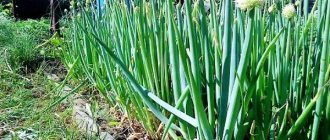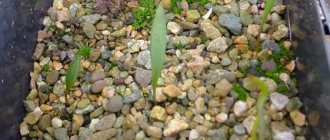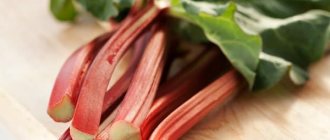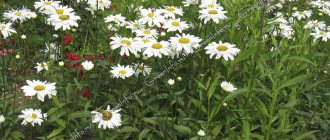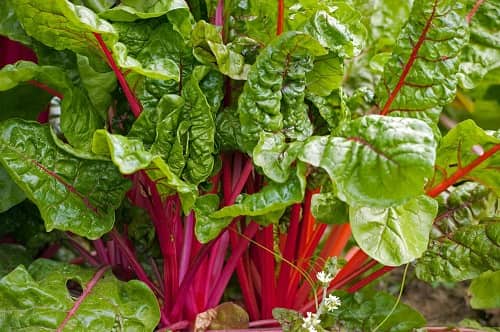
Few know what Swiss chard is, all the more so few people grow it on their site. Nevertheless, the plant has many beneficial properties for the body and it is not at all difficult to grow it. This culture is the closest relative of ordinary beetroot. Only beets are eaten with a root vegetable, and with chard - the leafy part and roots. Even their leaves are similar to beets. Having learned about the beneficial properties, you, too, will certainly want to grow chard on your site. And now I will tell you how to do this.
What is Swiss chard
Chard is a special kind of classic beetroot. Leaves resembling a salad are eaten. It is a biennial herb that is successfully grown in most European countries.
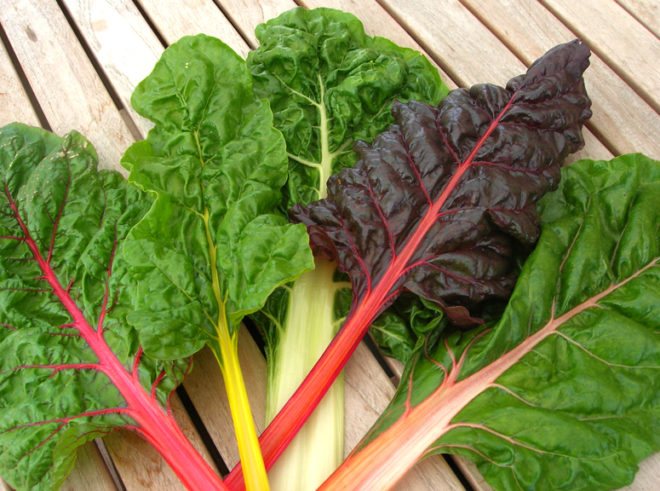

There are two types of plants:
- Stem chard - differs in the presence of veins on the leaves and is eaten with stems.
- Schnitt Swiss chard or roman cabbage - grows from the root, and when the leaves are cut off, new ones grow, which allows you to constantly have fresh herbs on the table.
The plant is gaining popularity in our country, especially among those who follow a healthy diet.
How to choose and store
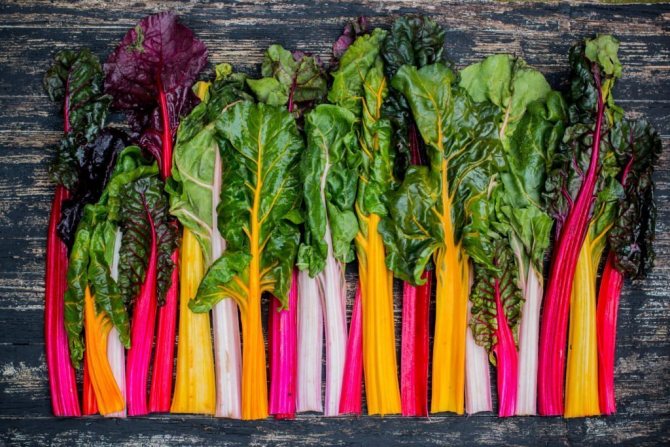

In the store, you should give preference to leafy vegetables, which are contained in the refrigerated display case. The low temperature guarantees crisp texture, juiciness and sweet taste. The best are bright green leaves without holes and stems without any damage. To avoid harm from heavy metals and pesticides, only certified products should be purchased. They can be found in organic stores or large supermarkets.
After purchase, Swiss chard is freed from commercial packaging and placed in a plastic bag, wrapped as tightly as possible. It is impossible to wash the plant - this will accelerate the deterioration. Then the bag is placed on the bottom shelf of the refrigerator. Here the vegetable will remain fresh for up to 5 days. A large batch of Swiss chard, for example, from your own garden, can be divided into separate leaves and stems, dipped in boiling water for a few seconds, and then frozen.
Composition and calorie content of chard
The calorie content of the leaves of this salad is 19 Kcal per 100 grams of product.
The curly leaves of this salad include:
- Vitamin K.
- Sodium.
- Magnesium.
- Iron.
- Vitamins A and E.
- Alpha and Beta Carotene.
- Riboflavin.
- Vitamin PP.
- Manganese.
- Zinc.
- Phosphorus.
The leaves also contain sugar. Previously, it was extracted from the stems of plants by boiling until they began to use sugar beets for this.
Diseases and pests
Beetroot is highly resistant to a wide range of serious diseases, but it is also susceptible to viruses. Slugs are risky for sowing. When breeding, you will need to take proper care, as well as take preventive measures.
Powdery mildew and fungal formations pose some danger to the crop. A popular root cause of the formation of the 1st signs of disease is considered to be high humidity in the growing area. Mangold petioles often suffer from the appearance of white bloom. In order to exclude such a thing when breeding a huge crop, it is necessary to thin out the seedlings in time, so that the plantings are preferably ventilated, and the air at the stalks is not refractory.
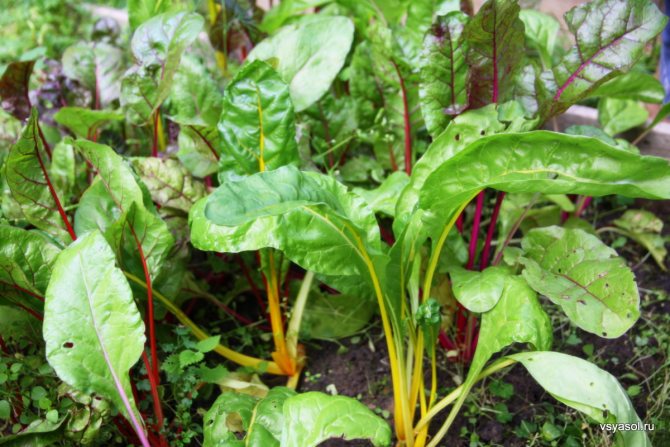

Earthen fleas and beet aphids are risky for sowing. This is the reason why gardeners, after a month after the emergence of seedlings, begin to cultivate areas with planting in advance. These parasites can cause many problems. When growing Swiss chard, it is possible to cover the plant with tobacco dust and wood ash (1 to 1 ratio). Against aphids, it is allowed to use a specialized tincture based on bitter onions.
In the same way, after a certain time after sowing, birds have every chance to start arriving on the site, since they like to use young beet seedlings for food. To protect the crop, it is possible to use non-woven coverings, covering the plantings from above. With the help of ash, it is possible to prevent slugs from entering the planting area.
Why is Swiss chard useful?
The benefits of beetroot can hardly be overestimated. Regular consumption of the leaves will have an anti-cancer effect, as well as effectively cleanse the body of toxins and toxins.
Other beneficial properties:
- Strengthens tooth enamel and bone tissue.
- Fights anemia.
- Increases blood clotting properties.
- It activates the brain and optimizes blood circulation.
- Promotes the reproduction of blood cells.
- It normalizes the work of the heart and blood vessels.
- Strengthens the immune system.
- Restores cells of the pancreas.
In addition, the leaves heal hair, restore a healthy look to the skin and activate the body's defenses. Choline prevents liver obesity, and dietary fiber normalizes the digestive tract.
Growing chard to decorate the garden
To create an interesting and colorful display in the garden, grow a reddish-brown Charlotte with White Beetroot flowers; a plant with white stems of the Fordhock Giant variety - with red verbena or blue lobelia; greens of the "Bright yellow" variety - with dwarf red marigolds and a copper coleus plant.
The trick is to buy the seeds in individual colors rather than a mixture of "bright lights". In addition to reds, whites and yellows, there are varieties with purple or orange stems.
Sow in the greenhouse in early or mid April; Move seedlings into 7.5 cm pots and plant in the ground in late May or early June. Plant chard in containers or sunny locations with plants in contrasting or harmonious shades.
For early harvests, sow chard in cold greenhouses in late February or in open areas in March. For a winter crop, sow the seed in open areas twice a summer, or prune spring crops. Leave a few plants from summer sowing in a container for a more generous crop and a more textured foliage during the winter.
The use of chard in traditional medicine
Beetroot has been used in folk medicine for centuries. Its properties will help with a variety of diseases of the digestive system, cardiovascular, musculoskeletal system.
List of diseases for which it is recommended to use beetroot:
- Toothache.
- Headache.
- Inflammatory processes of the eyes.
- Runny nose.
- Hair problems (baldness, dandruff, brittleness).
- Angina and problems in the respiratory tract.
- Iron deficiency, vitamin deficiency.
- Burns, cuts, abscesses.
The leaves have a wound healing, diuretic and anti-inflammatory effect.
Prescriptions for treatment
As a remedy, a decoction of the leaves of roman cabbage is used. To do this, you need to take 50 g of chard leaves and 0.5 liters of water. Cook on a steam bath for 12 minutes. The broth is used as a diuretic and wound healing agent.
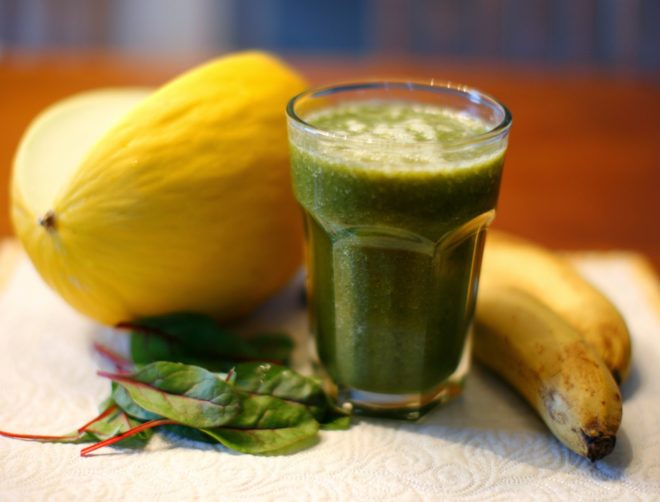

To soothe a toothache, it is recommended to apply a vegetable stalk to a sore tooth. To counteract the headache, apply a leaflet on the forehead.
Important! The leaves should be freshly harvested, if you buy in the store - as fresh as possible.
How are leafy beets eaten?
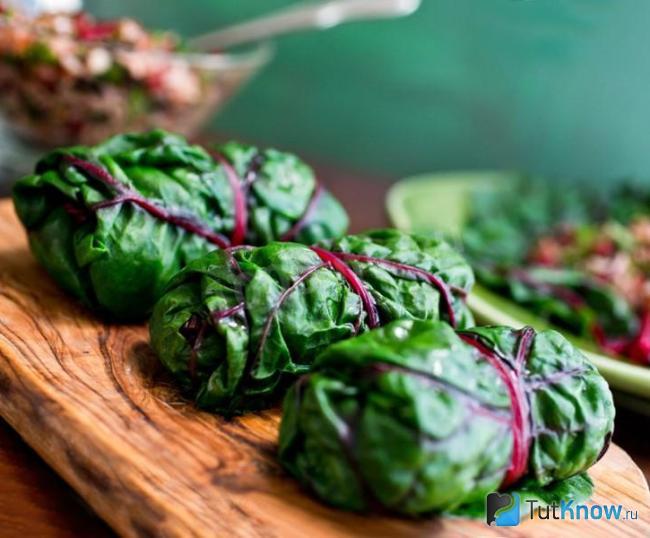

Before you eat Swiss chard, you need to learn how to choose it correctly. The leaves should be fresh, crisp, with a surface without dots and spots, whitish areas.
The plant is cut from the garden with a sharp knife and washed under running water. Slicing and cooking depends on the way it is consumed. Roman cabbage is often added to salads, it is cut into strips. Stem varieties are first blanched or boiled for 1-2 minutes, drain the first water and cook until tender.
Do not soak chard before making it. This significantly reduces the palatability. In addition, water flushes nutrients out of beetroot.
You can store greens in the refrigerator on the shelf for 5 days, wrapped tightly in cellophane to restrict air access. After storage, the salad will already be tasteless; it is advisable to use the product only boiled.
To preserve the product for a longer time, it is sliced and frozen. But again, it is not suitable for a salad after freezing.
Chard in cosmetology
Beetroot is used as face masks, strengthens the skin, hair, and resists baldness. The benefits of chard for health not only internal, but also external makes it popular among lovers of caring for their appearance.
Face masks
Moisturizing facial treatment: pour boiling water over the leaves of the plant, then let it cool down a bit and put it on the skin. Fasten gauze on top. After 20 minutes, remove, and after another half hour, you can wash with warm water, if you wish.
Vitamin mask: chop the leaves, pour boiling water and create a gruel. Add honey in the amount of 1 teaspoon. Create a compress with gauze and put it on your face for 20 minutes.
Masks from this plant strengthen and cleanse the skin, smooth wrinkles and rejuvenate.
Chard for hair
For hair, juice of chard leaves is most often used. It is necessary to rub it into the scalp. It is especially useful to do this when there is a threat of baldness. Compresses are also used to improve hair growth. The juice is rubbed into the scalp in the evenings for a month.
How to care for chard outdoors
Even if the cultivation of chard in the open field does not pose any particular problems, nevertheless, in order to achieve an excellent yield in the form of large, succulent leaves, the seedlings need to be minimally looked after. Care will consist in systematic loosening of the earth, watering, fertilizing and removing peduncles.
Caring for the soil and watering the plant
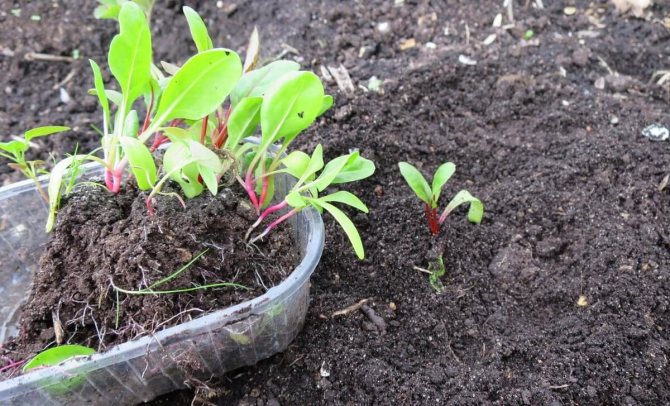

The soil under the chard needs to be weeded from time to time, then in order to exterminate weeds and facilitate the entry of oxygen to the roots. After watering and rains, it is imperative to loosen the earth so that a crust does not form. Beetroot loves moisture (but not stagnant), for this reason it is worth irrigating it generously, mainly in dry times. The watering cycle will depend on the weather, however, it is better if it will be at least once a week.
Excess moisture has the ability to induce the formation of powdery mildew on the plant.
How to fertilize Swiss chard
Leaf lettuce responds effectively to feeding. However, when performing this operation, it is necessary to know the measure, since an excess of fertilizers has the ability to lead to another result - to harm the culture. Excessive feeding threatens the accumulation of nitrates in the plant. you need to fertilize chard as a result of any cutting of leaves or petioles. For this, use the composition of urea (10 g / 10 l of water), mullein (1: 5), liquid herbal fertilizer.
What can be made from chard
The benefits of Swiss chard beets are even more enjoyable when cooked properly. The best option is to use fresh Swiss chard in various salads. Cold borscht is another option not to heat the product.
There are many recipes that involve cooking green leaves. This is an omelet, stuffed cabbage, various pies with the addition of greens. Beetroot goes well with both meat and other vegetables. For lovers of vegetable casseroles, add chalk of chopped leaves to your favorite dish. The salad combines the leaves of this greenery with grated cheese perfectly.


Mediterranean salad Mangold with chickpeas
Bright Mediterranean chard salad with farm vegetables and chickpeas.


Ingredients:
- Chard - 3 stems
- Red pepper - 1 pc.
- Radish - 6 pcs.
- English cucumber - ½ pc.
- Cherry tomatoes - 6 pcs.
- Avocado - 1 pc.
- Olives - 50 g
- Chickpeas - 100 g
- Parsley - 4 sprigs
- Goat cheese
- Lemon juice - 2 tablespoons
- Lemon zest
- Honey - 2 tsp
- Olive oil
Preparation:
Chop the chard very finely.
Chop avocado, radish, cucumber, tomato and pepper.
Boil chickpeas and soak in lemon juice.
Place all the salad ingredients in a large bowl. Add chopped parsley.
Whisk in lemon juice, honey and butter.
Pour the dressing over the salad. Chop the grated goat cheese onto the salad, if desired.
Harm of chard and contraindications to use
In addition to its benefits, Swiss chard also has a number of contraindications. First of all, do not get carried away with chard for gastritis, especially with its chronic form. Oxalic acid can cause exacerbation.
A large amount of oxalates makes the use of chard for cholelithiasis prohibited.
There are pathologies in which it is optimal to eat a simple beet, and not a leaf one:
- Kidneys in stones.
- Individual intolerance.
- Increased blood clotting.
With regard to blood clotting, this applies to everyone. Leaves eaten in large quantities contribute to migraine headaches.
Important! For good, it is enough to eat a couple of beet leaves a day.
Benefits of beetroot from a famous doctor:
Growing and care
Beets are sown from early spring to June, after soaking the seeds in water. The soil for planting must be well dug, warm, not acidic, so organic fertilizers, such as charcoal, must be applied. Seeds are buried in the ground 2-3 cm, at a distance of 5 cm from each other. With an increase in the growth of seedlings, they need to be thinned out, leaving a space of 10-12 cm between adult plants. There are no special requirements for care, chard needs timely watering (as needed), loosening the soil, removing weeds and a sufficient amount of light.
The leaves of the vegetable should be cut off regularly; young shoots are most suitable for eating. It is better not to touch the petioles until a large rosette is formed. The plant is two-year-old, so you don't need to dig it up for the winter, but you can leave it to winter in the garden, having previously spudded and covered with compost. Under normal conditions in winter, you will enjoy the vitamin-rich beet as early as early spring.
Seed selection: species and varieties
Despite the fact that chard is not often found in the dacha plots of residents of the Moscow region, a huge number of seeds of various types and varieties of this vegetable crop are presented in stores.
Planting material is chosen based on the following characteristics:
- ripening time,
- appearance,
- exactingness to care,
- winter hardiness,
- yield.
The early maturity and cold resistance of chard make it possible to get the first harvest of greens already at the beginning of June, that is, before the usual salad. For this, it is worth choosing leafy varieties. The petiolate will take a little longer to ripen.
Appearance matters if the plant is supposed to be grown for decorative purposes as well. Many representatives of this culture have attractive curly foliage and petioles of various colors and shades - red, burgundy, orange.Not bad decorativeness has a petioled chard of the Alyi variety. Among other things, it has good resistance to cold weather, which allows it to be grown without problems in the conditions of the Moscow region.
The Red chard is especially unpretentious in the choice of soil. This variety is quite hygrophilous, and breeders note its ability to quickly grow new foliage after cutting.
The longest fruiting period is in Argentat. Fresh greens of this vegetable can be cut from early June to late autumn.
The most productive variety in the middle lane is Belovinka. From each square meter of planting, you can get up to 5-7 kg of greens per season.
Some manufacturers produce a seed mixture. One such bag contains an assortment of different varieties of stalked chard. By purchasing a ready-made mixture, you can grow a large number of different representatives of this culture in one garden bed without special costs for planting material. Therefore, this option will be the best solution for owners of small plots.
Can chard be grown on a windowsill?
It can be grown on a windowsill, but for this you have to dig up roots in the fall garden. Choose only the best specimens with a sufficiently thick main suction root. Then plant the plants close to each other and sprinkle with soil mixture (to prepare the latter, mix sand, humus and turf soil in a ratio of 0.5: 1: 1). After that, keep the planted plants at a temperature of 9-10 degrees for 1.5 weeks.
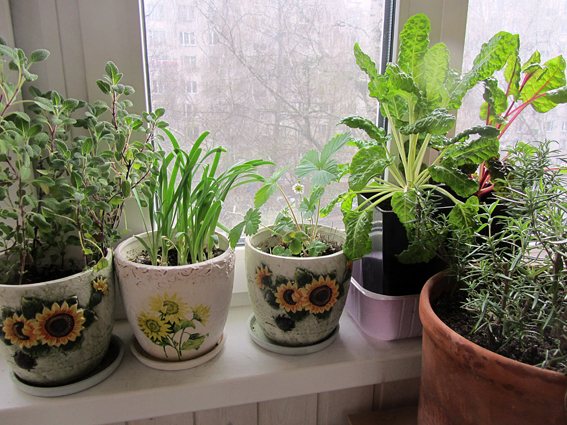

Growing chard at home
Under such conditions, chard will take root faster in a new place, and then, when you move it to a warmer room, it will begin to actively develop. The temperature here should be between 18-20 degrees. You can arrange plants on the southwest windows, in the veranda, on the glassed-in balcony. When watering, use water at room temperature, add organic and mineral fertilizing twice a month.


Growing chard at home

